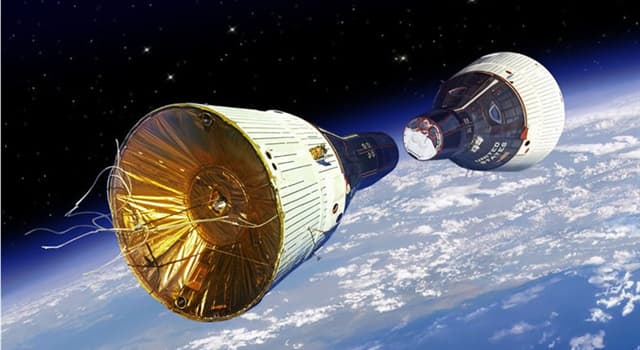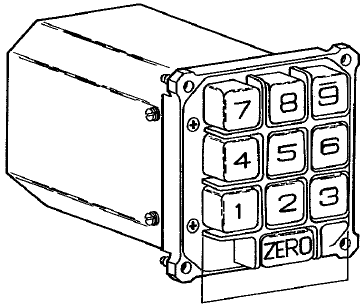© Mark Ollig
It was the start of the 1960s.
President John F. Kennedy wanted the country to take a leading role in what was known as “The Space Race.”
On May 25, 1961, before a joint session of Congress, President Kennedy spoke of his steadfast support of our country’s space program and made a bold challenge for the United States.
Kennedy mentioned the success of the 1957 Soviet Union’s Sputnik satellite and how the United States’ efforts in space were in review, “examining where we are strong and where we are not.”
He said it is now “... time for this nation to take a clearly leading role in space achievement, which in many ways may hold the key to our future on Earth.”
President Kennedy then made this bold challenge, “I believe that this nation should commit itself to achieving the goal, before this decade is out, of landing a man on the moon and returning him safely to Earth.”
The United States responded to his challenge by using human ingenuity and talent to create the required technologies and materials to send astronauts to the moon and bring them back to Earth.
On July 20, 1969, Apollo 11’s Lunar Module named Eagle landed astronauts Edwin “Buzz” Aldrin and Neil Armstrong onto the moon’s surface.
The third Apollo 11 astronaut, Michael Collins, orbited the moon in the Command Module named Columbia.
The Eagle’s ascent stage would take Aldrin and Armstrong off the moon’s surface to a rendezvous and docking with Columbia.
All three astronauts returned safely to Earth.
Testing several types of equipment in space was needed to achieve Apollo 11’s historical accomplishment, including an onboard guidance computer.
In 1962, in their Space Guidance Center in Owego, NY, the computer folks at IBM began building a digital onboard guidance computer (OBC) for NASA’s Gemini spacecraft.
On March 23, 1965, astronauts Gus Grissom and John Young were the first crew inside a Gemini space capsule. They performed tests on and used the OBC to assist with three orbits around the Earth.
A Gemini astronaut would enter or key in space navigational data into the onboard guidance computer using pushbuttons. The computer’s display screen showed the spacecraft flight data.
The OBC assisted Gemini astronauts with steering their craft through complicated space maneuvers and completing navigational and trajectory calculations Apollo astronauts going to the moon would require.
Apollo spacecraft used a similar, but more technologically-advanced digital onboard guidance computer on their missions to the moon, called the Apollo Guidance Computer or AGC.
In preparation for the Apollo moon trip, a series of Gemini spacecraft missions successfully tested numerous procedures and completed various objectives with the OBC, including:
• maneuvering an orbiting spacecraft;
• rendezvousing procedures with another spacecraft for docking;
• navigating in space;
• maintaining a controlled Earth-reentry using an onboard computer.
For its time, Gemini’s digital onboard guidance computer was considered an advanced piece of technology.
It was designed with a pushbutton data input interface, making it easily operable by the spacecraft’s crew.
The onboard guidance computer performed highly complex calculations (over 7,000 per second) used for space maneuvering, course guidance, navigation, and other operations.
Located in an equipment bay wall to the left of the Gemini spacecraft commander’s seat, the OBC weighed almost 59 pounds, and its dimensions measured 18.9 inches high by 14.5 inches wide by 12.75 inches deep.
The onboard guidance computer control panel contains a seven-segment modular display readout and a modular display keyboard with a pushbutton labeled “Zero” and individual 1 – 9 buttons.
Three other pushbuttons are labeled: READOUT, CLEAR, and ENTER. In addition, the digital OBC system contains a variety of status indicator lamps and rotary control switches.
The Gemini digital onboard guidance computer performs specific logic-processing functions within its programming modules using high-level flight operational software.
The OBC processed data from computing telemetry systems on the ground or by an astronaut inside the spacecraft entering data using the pushbuttons.
The Titan II rocket the Gemini spacecraft was attached to during liftoff also contained a digital guidance computer.
This computer adjusted the Titan rocket’s velocity and made any course corrections needed for getting the Gemini spacecraft into the correct Earth-orbiting path.
The Titan guidance computer relayed data to Gemini’s onboard guidance computer.
If the Titan computer failed, the Gemini onboard guidance computer would take over and calculate any needed altitude course corrections.
One special mission saw the Gemini 6 spacecraft using its onboard computer to support its orbit and calculate rendezvous maneuvering trajectories to align itself with another spacecraft in Earth orbit; Gemini 7.
Dec. 15, 1965, 160 miles above the Earth, Gemini 6 and Gemini 7 conducted the first successful maneuvering and rendezvous between two Earth-orbiting spacecraft.
Both spacecraft came within 1 foot of each other and could have physically hard-docked; however, the design of the Gemini spacecraft did not permit this.
The success of the Gemini ship-to-ship maneuver test demonstrated the ability of the onboard guidance computer to calculate a rendezvous between two orbiting spacecraft.
A docking mechanism is a part of the Apollo Command Module and Lunar Module spacecraft design.
NASA was now confident Apollo spacecraft could conduct a successful rendezvous maneuver while orbiting the moon using the digital onboard guidance computer.
NASA’s Gemini digital onboard guidance computer proved to be one of the vital keys used to unlock the door for President Kennedy’s goal of sending an American to the moon before the end of the 1960s.
You can view an eight-minute segment of President Kennedy’s May 25, 1961 address to Congress encouraging the United States to go to the moon at https://bit.ly/2TC6OsY.
This internet public library provides a detailed description (including diagrams) of the Gemini OBC: http://www.ibiblio.org/apollo/Gemini.html.
The United States spent a total of $25.8 billion during the Apollo space program to send astronauts to the moon, which, when adjusted for inflation, would today amount to around $260 billion.
Project Gemini space program cost was $1.3 billion or $13.8 billion in today’s dollars.
 |
| Gemini Onboard guidance computer (OBC) with cover removed |







